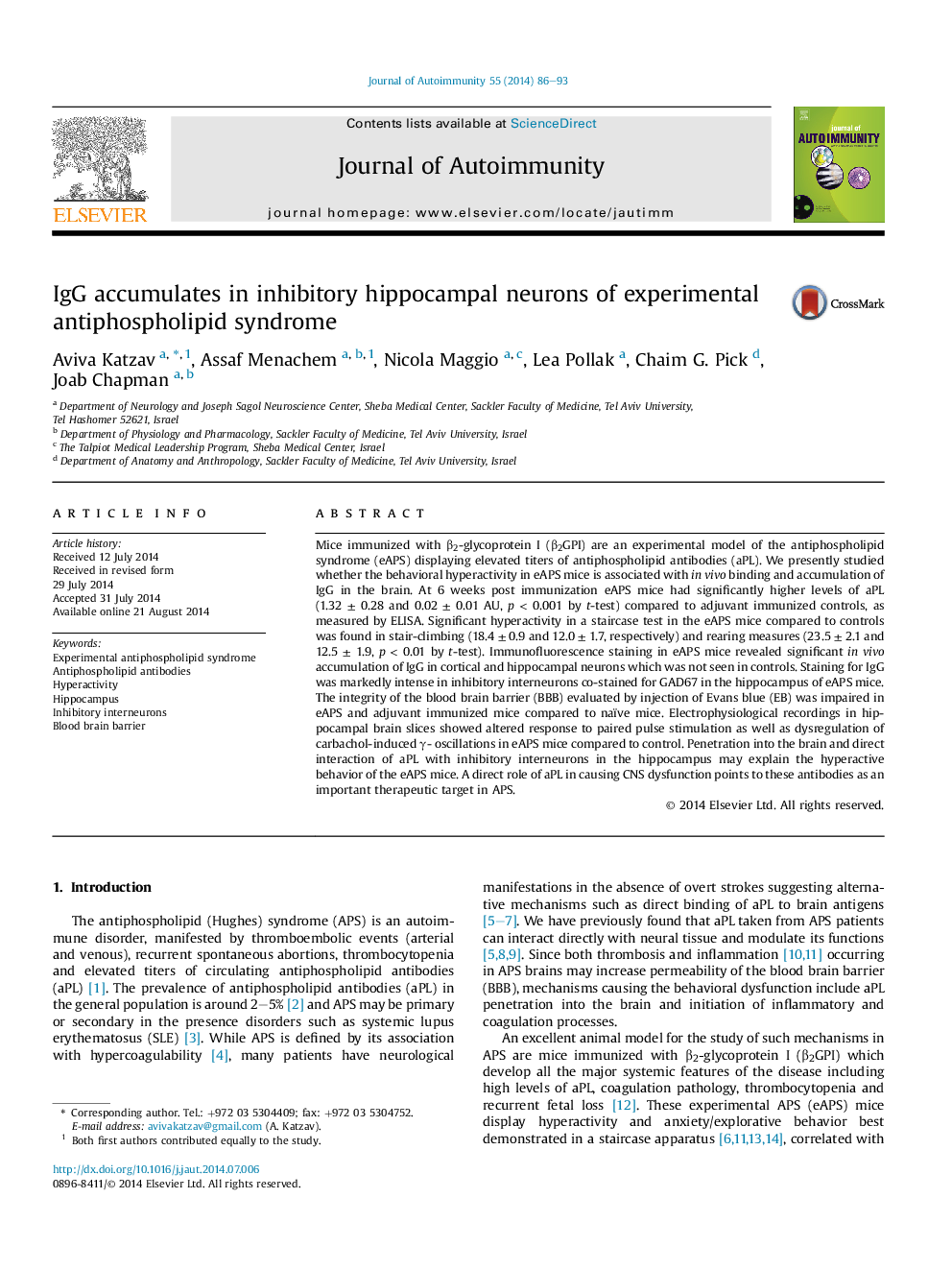| Article ID | Journal | Published Year | Pages | File Type |
|---|---|---|---|---|
| 6119235 | Journal of Autoimmunity | 2014 | 8 Pages |
Abstract
Mice immunized with β2-glycoprotein I (β2GPI) are an experimental model of the antiphospholipid syndrome (eAPS) displaying elevated titers of antiphospholipid antibodies (aPL). We presently studied whether the behavioral hyperactivity in eAPS mice is associated with in vivo binding and accumulation of IgG in the brain. At 6 weeks post immunization eAPS mice had significantly higher levels of aPL (1.32 ± 0.28 and 0.02 ± 0.01 AU, p < 0.001 by t-test) compared to adjuvant immunized controls, as measured by ELISA. Significant hyperactivity in a staircase test in the eAPS mice compared to controls was found in stair-climbing (18.4 ± 0.9 and 12.0 ± 1.7, respectively) and rearing measures (23.5 ± 2.1 and 12.5 ± 1.9, p < 0.01 by t-test). Immunofluorescence staining in eAPS mice revealed significant in vivo accumulation of IgG in cortical and hippocampal neurons which was not seen in controls. Staining for IgG was markedly intense in inhibitory interneurons co-stained for GAD67 in the hippocampus of eAPS mice. The integrity of the blood brain barrier (BBB) evaluated by injection of Evans blue (EB) was impaired in eAPS and adjuvant immunized mice compared to naïve mice. Electrophysiological recordings in hippocampal brain slices showed altered response to paired pulse stimulation as well as dysregulation of carbachol-induced γ- oscillations in eAPS mice compared to control. Penetration into the brain and direct interaction of aPL with inhibitory interneurons in the hippocampus may explain the hyperactive behavior of the eAPS mice. A direct role of aPL in causing CNS dysfunction points to these antibodies as an important therapeutic target in APS.
Keywords
Related Topics
Life Sciences
Immunology and Microbiology
Immunology
Authors
Aviva Katzav, Assaf Menachem, Nicola Maggio, Lea Pollak, Chaim G. Pick, Joab Chapman,
